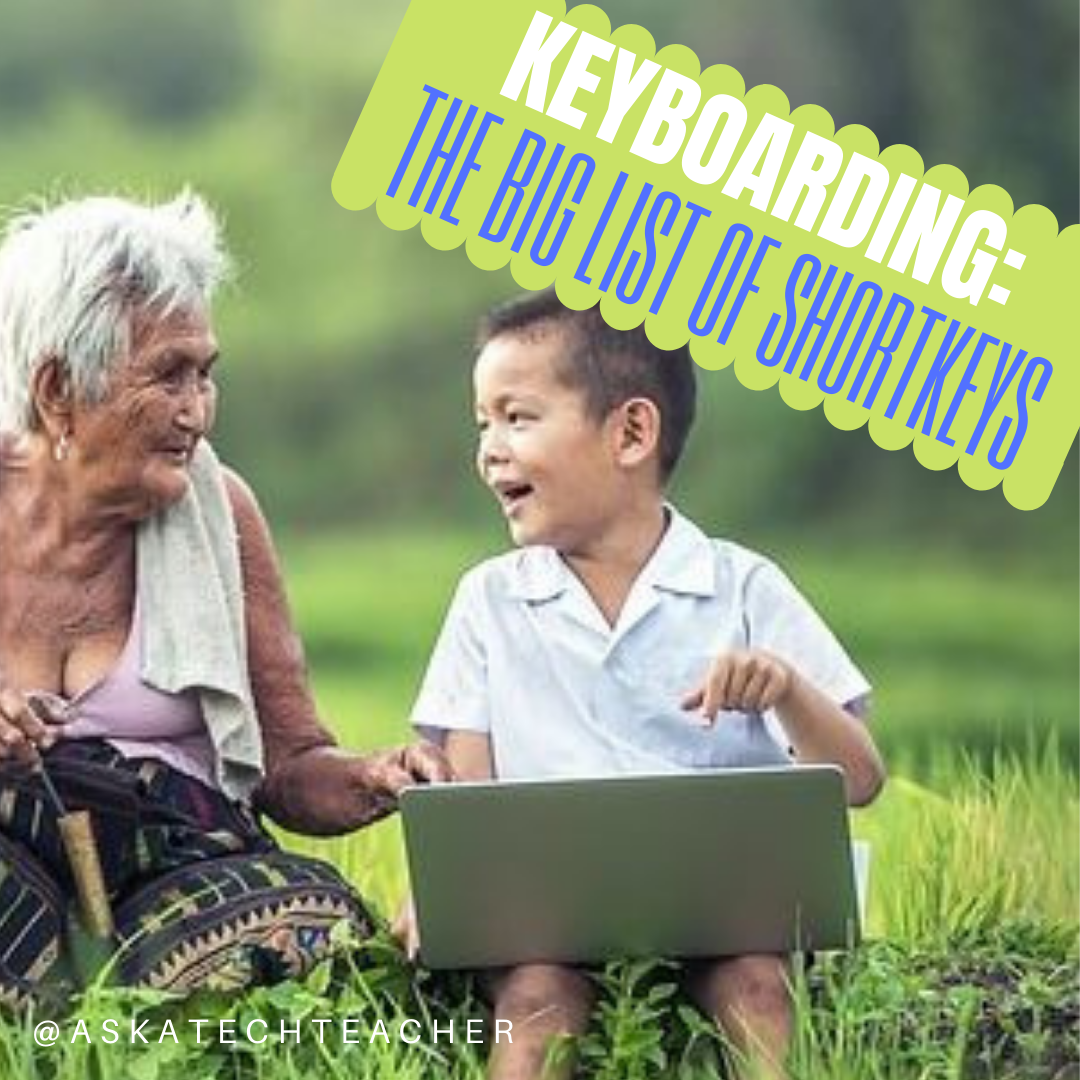 Bernadette Roche is the Director of Technology for an independent school in the Kansas City area. Her responsibilities include teaching students in grades preschool – 8th grade twice a week, 30-40 minutes per class. I recently had the opportunity to discuss her philosophy of keyboarding and student education with her. I think you’ll enjoy her thoughts:
Bernadette Roche is the Director of Technology for an independent school in the Kansas City area. Her responsibilities include teaching students in grades preschool – 8th grade twice a week, 30-40 minutes per class. I recently had the opportunity to discuss her philosophy of keyboarding and student education with her. I think you’ll enjoy her thoughts:
Some of you have asked about standards that I use for keyboarding…..
My philosophy on keyboarding is that it actually starts the minute a kid uses a computer since it requires kids to look at the letters in a different order than what they are used to. I divide keyboarding into informal and formal. Informal keyboarding for my school starts in Preschool (age 3) when the kids start to learn to recognize the letters on the keyboard. They continue with keyboard letter recognition through Prekindergarten and Kindergarten. We use Kid Keys software.
In 1st grade, I implement two handed keyboarding. This is also the first time that we regularly keyboard as part of our tech class – 5 to 10 minutes at the start of every class. We talk about the dividing line on the keyboard, which letters are on which side, and then when kids keyboard, they are expected to use two hands, although which finger they use doesn’t matter to me. My reminder to them is that if I come around with my “KC Chiefs chopper” (allusion to our city’s football team) I might “chop” off hands that are on the wrong side of the keyboard. Still using Kid Keys software.
In 2nd grade, I start teaching them formal keyboarding using Type to Learn 3. Again, still just 5-10 minutes per class and I really monitor that they are starting to use different fingers to type. We also start looking at accuracy and WPM, mainly so that kids get the idea that they are improving in both areas.
3rd grade is where I consider the official start of formal keyboarding in that I regularly monitor keyboarding behaviors, accuracy and WPM as well as which lesson kids are on – I want to see them making process. We use Type to Learn 3 too. We tend to lean more towards the 10 minute side of things in class, and I sometimes devote an entire class period to keyboarding depending. This is also the first year that keyboarding is included on grade cards. By the end of 3rd grade, I expect kids to be able to type 15-20 WPM with at least 90% accuracy. I find most kids hit 15 WPM by mid year and just about everyone hits 20 by the end.
In 4th grade, I switch software to Typing Instructor, but the approach is the same for 3rd. By the end of 4th, I expect kids to type 25-30 WPM with at least 90% accuracy. Depends on the group and kid on when they hit this point. I have a group of kids this year that are really struggling across all academic areas, so I expect they will be lower on the scale as a group. That being said, I have 2-3 kids who are already hitting 35+ WPM.
In 5th-8th grade, we spend less class time on keyboarding, but the kids are keyboarding much more as part of their other classes. I assess keyboarding about twice a quarter. Expectations are kids will type 30-35 WPM with 95% accuracy. It’s a struggle for 5th graders to hit 30-35, but my 7th and 8th graders regularly hit 35+. I find that kids who have been with me for several years do just fine. I have a brand new 5th grader this year who hunts and pecks, very little formal keyboarding instruction. For comparison, this student comes in around 60-70% accuracy with about 15 WPM. Take it with a grain of salt though since attitude plays a huge role in how you approach keyboarding…if you get my drift 🙂
Jacqui Murray has been teaching K-18 technology for 30 years. She is the editor/author of over a hundred tech ed resources including a K-12 technology curriculum, K-8 keyboard curriculum, K-8 Digital Citizenship curriculum. She is an adjunct professor in tech ed, Master Teacher, webmaster for four blogs, an Amazon Vine Voice, CSTA presentation reviewer, freelance journalist on tech ed topics, contributor to NEA Today, and author of the tech thrillers, To Hunt a Sub and Twenty-four Days. You can find her resources at Structured Learning.



































